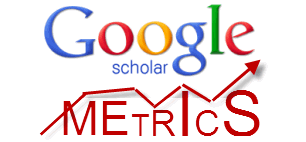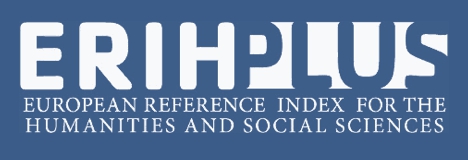USE OF TECHNOLOGICAL TOOLS FOR TEACHING DYNAMIZATION OF GEOGRAPHY COURSES IN HIGHER EDUCATION
Abstract
This study presents the perception of Higher Education students on the effect of the use of the technological tool Wooclap on their learning experience, after returning to the classroom after the restrictions imposed by the COVID-19 pandemic. In this study, 74 students of Geography subjects of the Primary Education Degree and the Tourism Degree of the University of Seville completed an online survey - using the SurveyMonkey survey platform - on their perception of the use of the Wooclap tool in class. Most of the students felt that Wooclap was a dynamic and easy-to-use tool, that it had helped them to concentrate better, that its use had facilitated the learning process and had allowed them to interact more with the teacher. These results demonstrate how the use of the Wooclap technology tool can facilitate the learning process, as well as communication between students and teachers. However, most students prefer to be assessed by combining classical assessment with technological tools (and not only by being assessed by combining classical assessment with technological tools). The results of the present study corroborate the benefits of promoting the use of the Wooclap tool in graduate teaching.
References
AL-LABADI, L., & SANT, S. (2021). Enhance learning experience using technology in class. JOTSE: Journal of Technology and Science Education, 11(1), 44-52.
ANSHARI, M., ALMUNAWAR, M.N., SHAHRILL, M., WICAKSONO, D.K., HUDA M. (2017). Smartphones usage in the classrooms: Learning aid or interference?. Educ Inf Technol 22, 3063–3079. https://doi.org/10.1007/s10639-017-9572-7
BABER, H. (2021). Modelling the acceptance of e-learning during the pandemic of COVID-19-A study of South Korea. The International Journal of Management Education, 19(2), 100503.
BHATIA, R.P. (2011). Features and Effectiveness of E-learning Tools. Global Journal of Business Management and Information Technology. 1(1), 1-7.
BERNATE, J.A., VARGAS GUATIVA J.A. (2020). Desafíos y tendencias del siglo XXI en la educación superior. Revista de Ciencias Sociales (Ve), vol. 26.
BOOSTANI, N., BRUMELOT, C., OUVRARD, L., STOCKINGER, P., VIGNY, P. J., TICE-DSIRN, U., & HO, C. (2020). L’enseignement-apprentissage du lexique médiatisé par le smartphone en classe de langue (le cas de la plateforme Wooclap). Archives Audiovisuelles Inalco. https://hal.campus-aar.fr/AAI/hal-03161986v1
BRUNER, J (1960). The Process of Education. Cambridge, Mass: Harvard University Press.
CATALINA-GARCIA, B., & GALERA, M. D. C. G. (2022). Innovación y herramientas hi-tech en la docencia del periodismo. El caso de Wooclap. Doxa Comunicación. Revista Interdisciplinar de Estudios de Comunicación y Ciencias Sociales.
GRZYCH G. AND SCHRAEN-MASCHKE S. (2019). Interactive pedagogic tools: evaluation of three assessment systems in medical education. Annales de Biologie Clinique, 77(4), 429-435
LIN, M.-H., CHEN, H.-G., & LIU, K.-S. (2017). A Study of the Effects of Digital Learning on Learning Motivation and Learning Outcome. Eurasia Journal of Mathematics, Science and Technology Education, 13(7), 3553-3564. https://doi.org/10.12973/eurasia.2017.00744a
LIESA-ORÚS, M., LATORRE-COSCULLUELA, C., VÁZQUEZ-TOLEDO, S., & SIERRA-SÁNCHEZ, V. (2020). The technological challenge facing higher education professors: Perceptions of ICT tools for developing 21st century skills. Sustainability, 12(13), 5339.
MARIN, J., BRICHLER, S., LECUYER, H., CARBONNELLE, E., & LESCAT, M. (2021). Feedback From Medical and Biology Students on Distance Learning: Focus on a Useful Interactive Software, Wooclap®. Journal of Educational Technology Systems, 00472395211023383.
MEGUID, E. A., & COLLINS, M. (2017). Students’ perceptions of lecturing approaches: traditional versus interactive teaching. Advances in medical education and practice, 8, 229.
MOZOMBITE-JAYO, N., MANRIQUE-JAIME, F., CASTILLO-LOZADA, S., ROMERO-ANDRADE, C., GIRALDO-RETUERTO, M., DELGADO, A., & ANDRADE-ARENAS, L. (2022). Systemic Analysis of the Use of Technological Tools in the University Learning Process. International Journal of Engineering Pedagogy, 12(4).
MUNOZ-NAJAR, A.; GILBERTO, A.; HASAN, A.; COBO, C.; AZEVEDO, J. P.; AKMAL, M. (2021). Remote Learning During COVID-19: Lessons from Today, Principles for Tomorrow. World Bank, Washington, DC. Disponible en: https://openknowledge.worldbank.org/handle/10986/36665. Acceso en:12 Julio 2022).
MUÑOZ-REPISO, A.G.V. (2007). Herramientas tecnológicas para mejorar la docencia universitaria. Una reflexión desde la experiencia y la investigación. RIED. Revista Iberoamericana de Educación a Distancia, 10(2), 125-148.
POKHREL S. & CHHETRI R. (2021). A Literature Review on Impact of COVID-19 Pandemic on Teaching and Learning. Higher Education for the Future, 8 (1):133-141. https://doi.org/10.1177%2F2347631120983481
SANZ EJ, VICENTE-ROMERO J, PRIETO A. (2020). Experiencias de Docencia Virtual en Facultades de Medicina Españolas durante la pandemia COVID-19 (II): Farmacología, Inmunología. Rev Esp Edu Med;1:74-81; doi:10.6018/edumed.429481
WOOCLAP (2022). Wooclap. Disponible en: https://www.wooclap.com/. Acceso en: 15 Septiembre 2022).
WOOCLAP (2021). Make learning awesome & effective. Disponible en: https://www.wooclap.com/ (Último acceso 15 Septiembre 2022).

This work is licensed under a Creative Commons Attribution-NonCommercial 4.0 International License.
Policy Proposal for Free Access Journals
Authors who publish in this journal agree to the following terms:
a. Authors retain the copyright and grant the journal the right of first publication, with the work simultaneously licensed under the Creative Commons Attribution License which allows the sharing of the work with acknowledgment of the authorship of the work and initial publication in this journal.
b. Authors are authorized to take additional contracts separately, for non-exclusive distribution of the version of the work published in this journal (eg publish in institutional repository or as a book chapter), with acknowledgment of authorship and initial publication in this journal.
c. Authors are allowed and encouraged to publish and distribute their work online (eg in institutional repositories or on their personal page) at any point before or during the editorial process, as this can generate productive changes, as well as increase the impact and The citation of published work (See The Effect of Free Access).





















